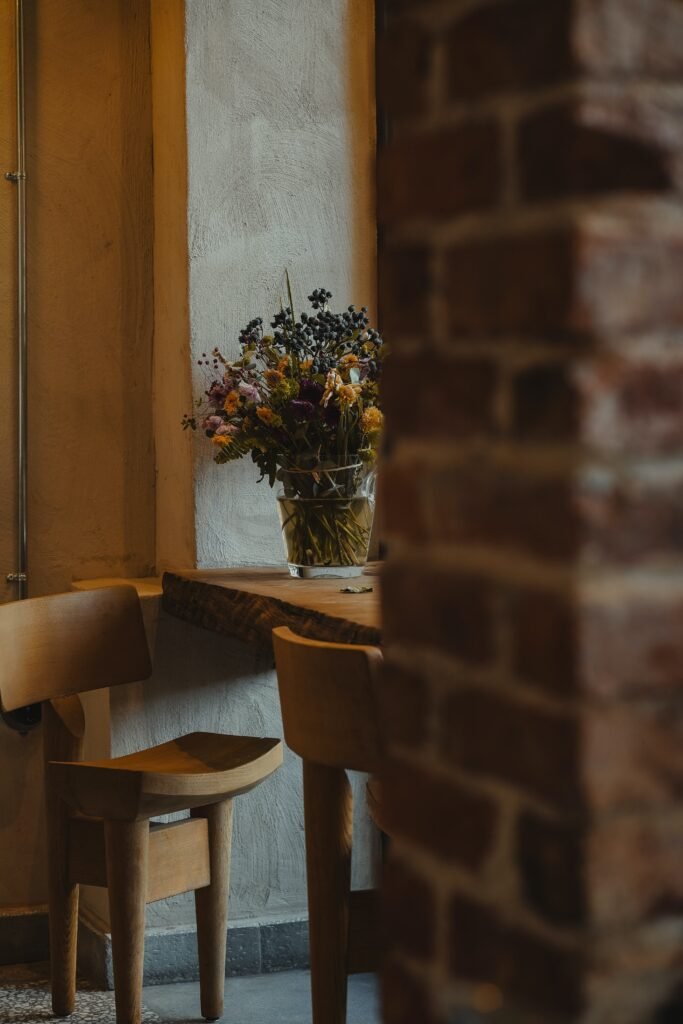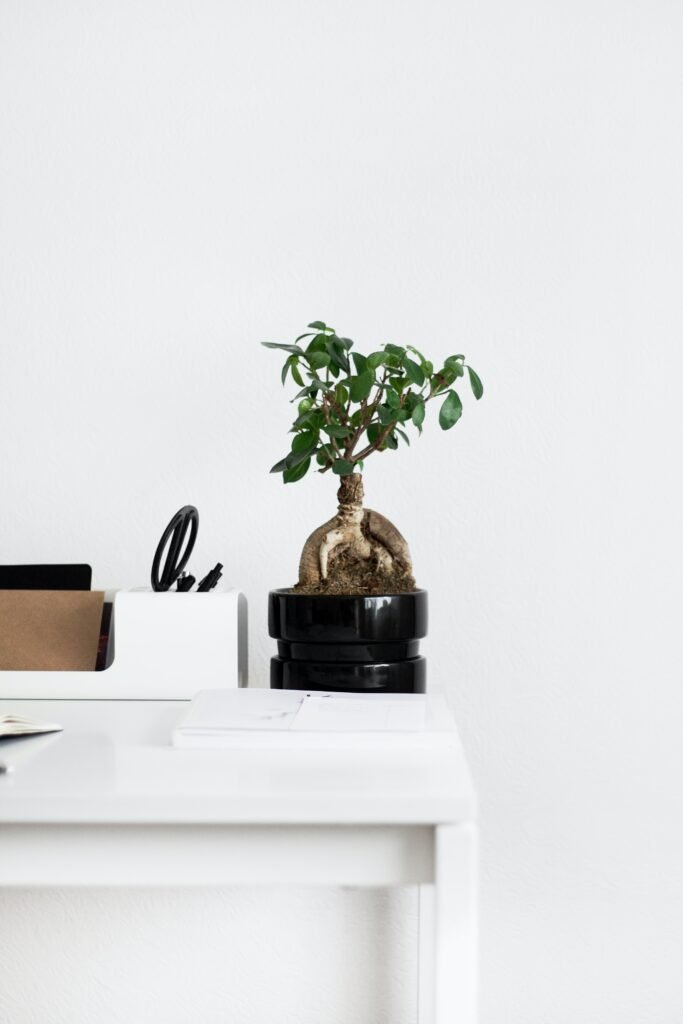If you’re looking to transform your living space into a serene and clutter-free oasis, then creating a minimalist interior design is just what you need. With its emphasis on simplicity, functionality, and clean lines, minimalist design can bring a sense of calm and order to any room. By carefully selecting furniture, decluttering your belongings, and incorporating a cohesive color palette, you’ll be well on your way to achieving a minimalist haven that promotes relaxation and clarity. Let’s explore some simple yet effective strategies to create a minimalist interior design that truly embodies the less-is-more philosophy.
Choosing a Color Palette
Neutral Colors
One of the key elements in creating a minimalist interior design is choosing the right color palette. Neutral colors are a great choice as they help create a calming and serene atmosphere. Shades of white, beige, gray, and taupe work well in minimalist spaces. These colors create a clean and timeless look that allows the focus to be on the simplicity and functionality of the design. Additionally, neutral colors make it easier to incorporate other elements into the space without overwhelming the overall aesthetic.
Monochromatic
If you want to add some depth and interest to your minimalist interior design, consider using a monochromatic color scheme. This involves using different shades and tones of a single color throughout the space. For example, you could use varying shades of blue, from light to dark, to create a sense of depth and dimension. The monochromatic color scheme adds a subtle visual interest without overwhelming the simplicity of the design.
Pop of Color
While minimalism often focuses on neutral colors, you can still add a pop of color to create a focal point or add a touch of personality to the space. When using a pop of color, it’s important to use it sparingly to maintain the overall minimalist aesthetic. You can choose to introduce a vibrant accent color through accessories such as throw pillows, artwork, or a statement piece of furniture. This subtle injection of color adds visual interest and livens up the space without cluttering it.
Decluttering and Simplifying
Remove Unnecessary Items
The first step in achieving a minimalist interior design is to declutter and remove unnecessary items. Take a critical look at your space and identify any items that are not essential or do not contribute to the overall aesthetic. Keep only the items that are functional or have sentimental value, and find appropriate storage solutions for them. Removing unnecessary items will help create a clean and streamlined look.
Organize Storage Spaces
To maintain a minimalist interior design, it’s important to have organized storage spaces. Use storage solutions such as bins, baskets, and shelves to keep items neatly stored away. Make sure everything has a designated place, and regularly declutter and organize these spaces to prevent accumulation of unnecessary items. Organized storage spaces contribute to the overall cleanliness and simplicity of the design.
Streamline Furniture
In a minimalist interior design, it’s important to choose furniture pieces that are sleek and have clean lines. Avoid furniture with ornate details or excessive decoration. Opt for pieces that are functional and serve their purpose without overwhelming the space. Multipurpose furniture is also a great choice to maximize the functionality of your minimalist design. For example, a coffee table with built-in storage or a sofa that can be transformed into a bed can help save space and maintain a clutter-free environment.
Furniture Selection
Clean Lines
When selecting furniture for a minimalist interior design, it’s important to prioritize clean lines. Look for furniture pieces with simple and sleek designs, free from unnecessary embellishments or fussy details. The focus should be on the functionality and simplicity of the furniture. This not only contributes to the minimalist aesthetic but also creates a sense of openness and ease in the space.
Functional Pieces
In a minimalist interior design, every piece of furniture should have a purpose. Choose functional pieces that serve a specific need in the space. Avoid incorporating furniture or decorative elements that are purely for aesthetic purposes and do not contribute to the overall functionality. By selecting furniture that is practical and serves a purpose, you can create a minimalist space that is efficient and clutter-free.
Multi-purpose Furniture
Maximize the functionality of your minimalist interior design by incorporating multi-purpose furniture. These pieces serve multiple functions and can help save space. Examples of multi-purpose furniture include storage ottomans, sofa beds, and extendable dining tables. These versatile pieces can adapt to different needs and make the most out of limited space. By choosing multi-purpose furniture, you can create a minimalist space that is both practical and visually appealing.
Lighting Design
Natural Light
Lighting is a crucial aspect of any interior design, and in minimalist design, it plays a significant role in enhancing the simplicity and openness of the space. Natural light is the best choice for a minimalist interior design, as it creates a warm and inviting atmosphere. Maximize natural light by keeping windows uncovered or using sheer curtains to allow sunlight to stream in. The use of natural light not only brightens up the space but also highlights the clean lines and minimalistic elements of the design.
Simple Fixtures
When choosing lighting fixtures for a minimalist interior design, opt for simple and understated designs. Avoid overly ornate or intricate fixtures that can clash with the minimalistic aesthetic. Choose fixtures with clean lines and a streamlined appearance. Pendant lights, recessed lighting, or track lighting are good options for achieving a minimalist look. The goal is to keep the focus on the simplicity of the design rather than on the lighting fixtures themselves.
Task Lighting
In addition to natural and ambient lighting, task lighting is essential in a minimalist interior design. Task lighting focuses on specific areas where additional light is needed for tasks such as reading, studying, or working. Consider incorporating desk lamps, floor lamps, or wall-mounted lights to provide focused and functional lighting. Choose task lighting fixtures that blend seamlessly with the overall design and do not detract from the minimalist aesthetic.

Flooring Options
Hardwood Floors
Hardwood floors are a popular choice for creating a minimalist interior design. They provide a timeless and classic look that complements the simplicity of the design. Hardwood floors also add warmth and texture to the space. Opt for light-colored or neutral hardwood floors to maintain the clean and airy feel of the minimalist design. Avoid intricate patterns or excessive variations in the wood grain to maintain the overall simplicity.
Sleek Tiles
If hardwood floors are not an option, sleek tiles can be a great alternative for a minimalist interior design. Choose large format tiles in neutral colors such as white, gray, or beige. The sleek and uniform appearance of tiles contributes to the minimalist aesthetic by creating a clean and seamless look. Tiles also offer easy maintenance, making them a practical choice for high-traffic areas.
Area Rugs
To add comfort and warmth to your minimalist space, consider incorporating area rugs. Choose rugs with simple patterns or in solid colors that complement the overall color palette of the room. Opt for natural materials like wool or jute for a textural element that adds visual interest without overwhelming the design. Keep the size of the area rug proportional to the space to create a sense of balance and harmony.
Window Treatments
Minimalist Curtains
In a minimalist interior design, window treatments should be simple and unobtrusive. Opt for minimalist curtains in neutral colors, such as white or beige. Choose lightweight and sheer fabrics that allow natural light to enter the space while providing privacy. Floor-to-ceiling curtains can create a sense of height and openness, contributing to the overall minimalist aesthetic. Avoid heavy or ornate curtains that can overpower the simplicity of the design.
Sleek Blinds
If you prefer a more streamlined look, sleek blinds are an excellent choice for your minimalist interior design. Choose blinds in neutral colors that blend seamlessly with the overall color palette of the room. Roller blinds or Roman blinds offer a clean and uncluttered appearance. Additionally, they provide control over light and privacy, allowing you to adjust them according to your needs. Avoid large and bulky blinds that can detract from the minimalist aesthetic.
Sheer Panels
For a minimalist look that still offers some softness and texture, consider using sheer panels as window treatments. These lightweight and translucent panels allow natural light to penetrate while adding a gentle and elegant touch to the space. Sheer panels are available in various colors and designs, allowing you to choose options that complement your minimalist color palette. Keep the overall appearance light and airy by selecting panels with minimal decoration or patterns.
Wall Decor
Statement Artwork
Incorporating statement artwork can add personality and visual interest to your minimalist interior design. Choose a single large piece or a few smaller ones that serve as focal points on your walls. Opt for artwork with clean lines, simple compositions, and a limited color palette to maintain the minimalist aesthetic. Avoid cluttering the walls with too many pieces, as this can detract from the simplicity of the design. Let the artwork speak for itself and be the center of attention.
Minimalist Gallery
If you prefer a more curated look, create a minimalist gallery wall by showcasing a collection of artwork or photographs that follow a cohesive theme. Arrange the pieces in a clean and symmetrical grid pattern or a simple linear arrangement. Use frames with clean lines and a consistent color scheme to maintain a cohesive look. Keep the spacing between the pieces uniform for a balanced and minimalist effect. The minimalist gallery wall adds visual interest while still maintaining a sense of simplicity and order.
Textured Wall
To add texture and depth to your minimalist interior design, consider incorporating a textured wall. This can be achieved through various methods such as using textured paint, wallpaper, or reclaimed wood panels. Choose a texture that complements the overall aesthetic of the space and offers a tactile element. Whether with a subtle texture or a more pronounced pattern, a textured wall adds visual interest without overwhelming the overall simplicity of the design.
Incorporating Plants
Potted Plants
Introducing potted plants into your minimalist interior design brings a sense of nature and freshness to the space. Choose plants with clean lines and simple foliage, such as succulents or cacti, to complement the minimalist aesthetic. Place potted plants strategically throughout the space, focusing on areas that could benefit from a pop of greenery or a touch of nature. Use minimalist pots or planters that blend seamlessly with the overall design and avoid excessive decorative elements.
Air-purifying Plants
In addition to their aesthetic appeal, consider incorporating air-purifying plants into your minimalist interior design. These plants not only add a touch of greenery but also help improve air quality by filtering toxins and releasing oxygen. Some popular air-purifying plants include snake plants, spider plants, and pothos. These plants are low maintenance and can thrive in various light conditions. By incorporating air-purifying plants, you enhance the overall well-being and tranquility of your minimalist space.
Vertical Gardens
For those who want to take greenery to the next level, vertical gardens offer a unique and innovative way to incorporate plants in a minimalist interior design. Vertical gardens are created by attaching plants to a vertical structure, such as a trellis or a living wall system. This allows you to maximize the use of vertical space and add a striking design element to your minimalist space. Choose plants that thrive in vertical conditions and have a clean and minimalist appearance. Vertical gardens not only add beauty and freshness but also contribute to the overall sustainability and eco-friendliness of your interior design.
Creating Open Spaces
Open Floor Plans
An open floor plan is a key feature of minimalist interior design. It involves removing unnecessary walls or partitions that divide the space, creating a seamless and open flow between different areas. This design concept not only enhances the functionality and flexibility of the space but also creates a sense of spaciousness and openness. By opening up the floor plan, you maximize the available space and create a minimalist environment that feels light and airy.
Removing Walls
If a complete open floor plan is not feasible for your space, consider removing walls strategically to create a more open and connected feel. Identify walls that are not load-bearing or necessary for structural integrity and consult with a professional before making any modifications. By removing unnecessary walls, you can create a more functional and visually open space that aligns with the minimalist aesthetic.
Maximizing Space
In a minimalist interior design, it’s important to maximize the use of space efficiently. Ensure that each area serves a purpose and contributes to the overall functionality of the space. Use furniture that is appropriately sized for the room and avoid overcrowding. Incorporate storage solutions that utilize vertical space, such as wall-mounted shelves or floor-to-ceiling cabinets. By maximizing the use of space, you create a minimalist environment that is practical, organized, and visually appealing.
Balancing Function and Aesthetics
Choosing Practical Items
When selecting items for your minimalist interior design, prioritize functionality and practicality. Choose furniture, decor, and accessories that serve a purpose and contribute to the overall functionality of the space. Avoid incorporating items that are purely for aesthetics and do not enhance the functionality of the design. By choosing practical items, you maintain the simplicity and efficiency of the minimalist aesthetic.
Minimizing Clutter
Clutter is the enemy of a minimalist interior design. Regularly declutter and organize your space to prevent accumulation of unnecessary items. Avoid excessive decorations or unnecessary accessories that can clutter the space. Keep surfaces clean and clear, allowing the focus to be on the essential elements of the design. By minimizing clutter, you create a calm and uncluttered environment that aligns with the minimalist philosophy.
Subtle Accent Pieces
While minimalism emphasizes simplicity, you can still incorporate subtle accent pieces to add a touch of personality and visual interest to your interior design. Choose a few carefully selected accents that align with the overall aesthetic. For example, a statement sculpture, a unique vase, or a carefully curated collection of books can serve as subtle accent pieces. These items should be thoughtfully chosen and strategically placed to avoid overwhelming the space. By incorporating subtle accent pieces, you add depth and character to your minimalist interior design while still maintaining the overall simplicity and harmony.

